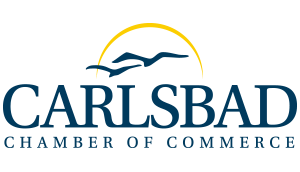As of December 31, 2005, covered employers in California were required to comply with the sexual harassment training mandates of AB 1825. Those mandates require that employers in California who employ 50 or more employees or receive the services of 50 or more persons (including temporaries and independent contractors) in twenty consecutive weeks in the current or preceding calendar year must provide sexual harassment training to supervisory employees within six months of their assumption of a supervisory position, and thereafter, every two years.
In past years, sexual harassment training has focused on traditional workplace harassment scenarios such as requests for dates, inappropriate comments, incidents of touching, and derogatory or sexually explicit emails. You may have even had training focused on such issues and think: Why do I need to go to training again?
Importantly, in today's electronic age which includes widespread electronic social networking (such as Facebook, Linked-In and others) and increased social interaction among employees, new minefields have arisen for employers. Employers no longer can concern themselves exclusively with conduct that occurs within the “four walls” of the workplace as sexual harassment claims are being made by employees for conduct that appears to be separate from the workplace. Consider the following scenarios:
• A male supervisor “friends” female subordinates on Facebook and then posts dirty jokes on his Facebook page. The female subordinates complain of sexual harassment.
• One employee posts derogatory and sexually degrading photos of women on his Facebook page which is not private. Other employees see the Facebook entries and report a claim of hostile work environment, sexual harassment.
• At a weekend house party, a group of employees berate, badger and fondle another employee. The employee complains of sexual harassment.
• After the holiday party, a male supervisor continues festivities at the bar. A few female employees stay to enjoy the fun. The banter becomes bawdy, and the female employees complain of sexual harassment.
These are the very scenarios that employers are now being forced to address. The law provides that any unwelcome, verbal, physical or visual conduct of a sexual nature that unreasonably interferes with an individual's work performance or creates an intimidating, hostile or offensive working environment constitutes unlawful sexual harassment. Regrettably, there is no bright-line rule that dictates when conduct outside the workplace can be deemed to be “work-related” thus, creating liability for the employer.
Any well thought-out sexual harassment policy must now address and recognize the increased effect of non-workplace conduct on the workplace. Employers should consult with their employment counsel to ensure that sexual harassment policies are updated to address these issues. Unfortunately, even with increased awareness of sexual harassment, the focus on training and prevention, the sexual harassment minefield is far from clear.
In past years, sexual harassment training has focused on traditional workplace harassment scenarios such as requests for dates, inappropriate comments, incidents of touching, and derogatory or sexually explicit emails. You may have even had training focused on such issues and think: Why do I need to go to training again?
Importantly, in today's electronic age which includes widespread electronic social networking (such as Facebook, Linked-In and others) and increased social interaction among employees, new minefields have arisen for employers. Employers no longer can concern themselves exclusively with conduct that occurs within the “four walls” of the workplace as sexual harassment claims are being made by employees for conduct that appears to be separate from the workplace. Consider the following scenarios:
• A male supervisor “friends” female subordinates on Facebook and then posts dirty jokes on his Facebook page. The female subordinates complain of sexual harassment.
• One employee posts derogatory and sexually degrading photos of women on his Facebook page which is not private. Other employees see the Facebook entries and report a claim of hostile work environment, sexual harassment.
• At a weekend house party, a group of employees berate, badger and fondle another employee. The employee complains of sexual harassment.
• After the holiday party, a male supervisor continues festivities at the bar. A few female employees stay to enjoy the fun. The banter becomes bawdy, and the female employees complain of sexual harassment.
These are the very scenarios that employers are now being forced to address. The law provides that any unwelcome, verbal, physical or visual conduct of a sexual nature that unreasonably interferes with an individual's work performance or creates an intimidating, hostile or offensive working environment constitutes unlawful sexual harassment. Regrettably, there is no bright-line rule that dictates when conduct outside the workplace can be deemed to be “work-related” thus, creating liability for the employer.
Any well thought-out sexual harassment policy must now address and recognize the increased effect of non-workplace conduct on the workplace. Employers should consult with their employment counsel to ensure that sexual harassment policies are updated to address these issues. Unfortunately, even with increased awareness of sexual harassment, the focus on training and prevention, the sexual harassment minefield is far from clear.
